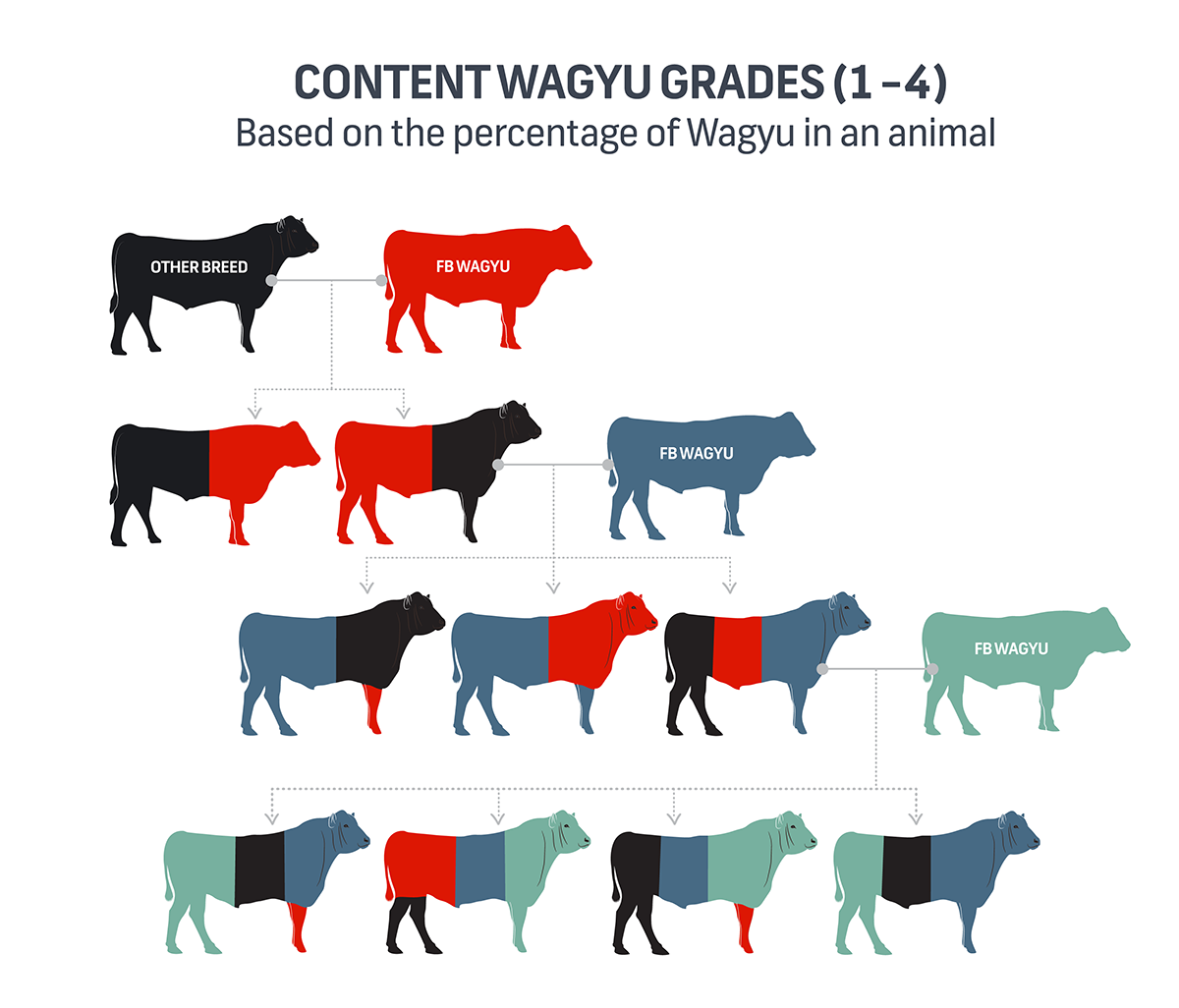Content Wagyu grades (1,2,3,4) are based on the percentage of wagyu in an animal. The grade of a content animal is determined with either generational registration or a Crossbred Wagyu Test (CWT).
The Australian Wagyu Association’s Crossbred Wagyu Test (CWT) uses genomic analysis to estimate the proportion of Japanese Black Wagyu genetics in crossbred cattle that are without traceable full pedigree records. Whilst only cattle with verified Japanese lineage can be registered as Fullblood, the CWT helps crossbred producers identify animals with high Wagyu content, improving consistency in meat quality and supporting better feeding, breeding, and marketing decisions. It also allows breeders the opportunity to register animals that previously could not be recorded with the AWA as registered animals. As we need a full genomic profile to recognise the presence of wagyu-specific traits, a CWT can only be conducted on a genomic SNP. It compares the “distance” the genotype of the animal being tested is away from the reference wagyu population. Breed content and traits are heritable and can loosely be estimated based on the prior generation, however it is not guaranteed that a F2 is 75%+ content and as such a F2 and Fullblood mating will not always produce an F3 calf.

Imagine that the red, blue, and green animals are fullblood wagyu animals. The red animal is another breed. You can see the cross bred animals don’t always inherit a tidy split of the genetic content present in a parent; unfortunately biology is never that straight forward. This unpredictable rearrangement of genes also makes estimating future wagyu content by generation a risk. Hence, for animals that are not able to be registered on parentage, the AWA recommends going as far back as you can, registering the oldest animals in a herd as content with a CWT test, and from there registering subsequent generations based on parentage.
As an extra note – we know that even some of the very first wagyu animals that came over from Japan do not test as 100% wagyu content on our CWT test. The CWT test was developed on the Australian wagyu population, which strongly favours Tajima lines. Other lines, such as Tottori or Itozakura are significantly genetically different, so much so that they may score within the 60-80% CWT range for fullblood animals which is why parent verification of fullblood animals is essential.
